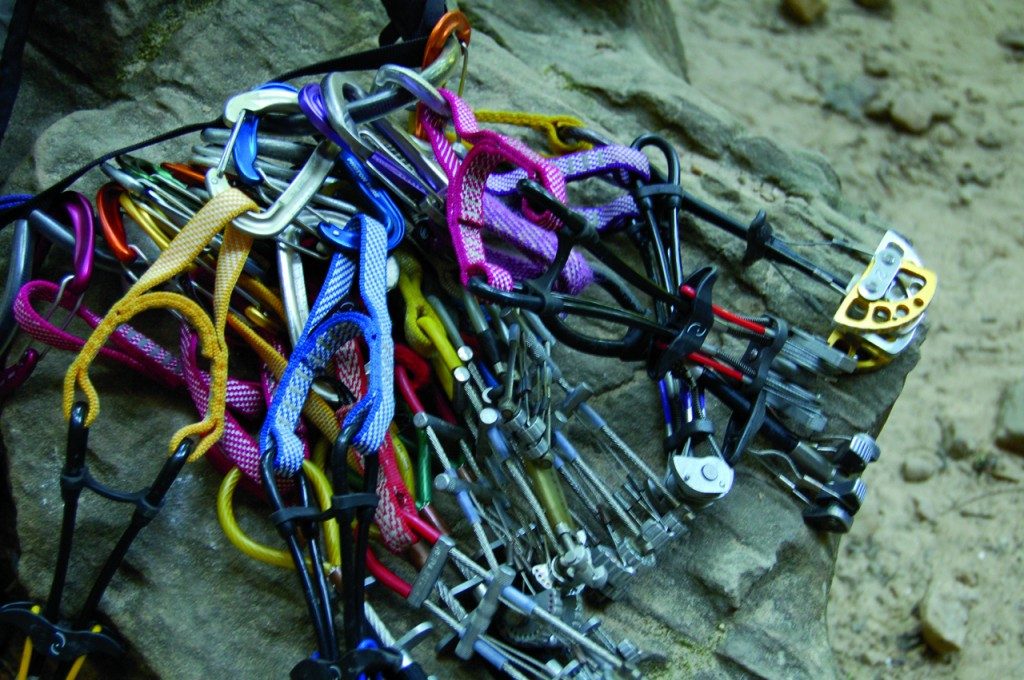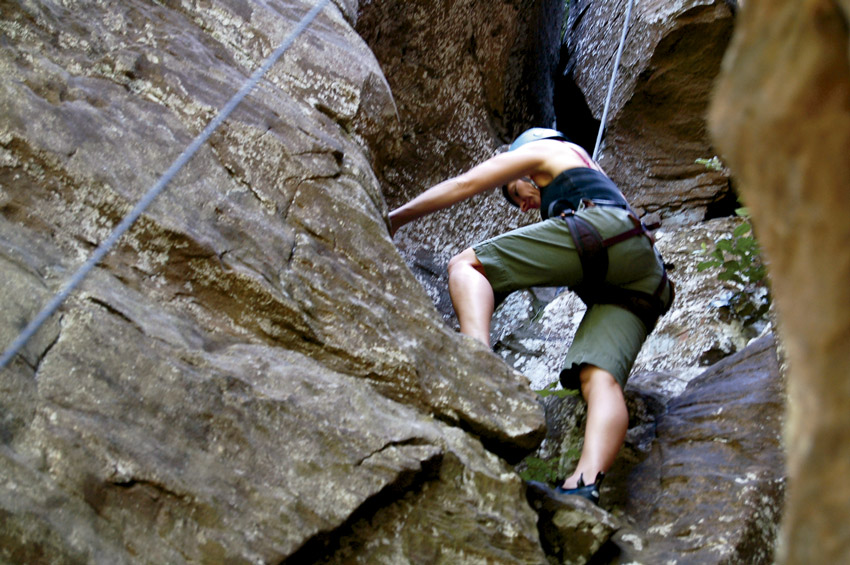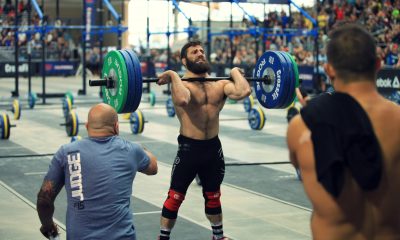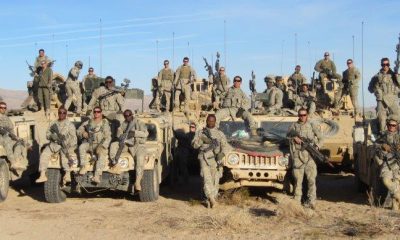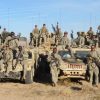Lifestyle
Mission Possible. Scaling to New Heights with Rock Climbing
My leg shook uncontrollably, a cue to get out of danger. I looked down at my climbing guide–a speck some 60 feet below. “I’m so tired!” I called. This was my fourth climb of the day, the sixth in the weekend on this, my first-ever climbing expedition.
“I know,” he called.
“Well, that’s a lot of help,” I grumbled. But what did I want? Permission to come down? I was this close to the top of the climb, a 5.8 traditional ascent up Boilerplate at Red River Gorge. Here in climbing nirvana, deep in the ancient forests of the Red in eastern Kentucky, I was on a quest to find out what I was made of.
Four months earlier I was wheeled into an operating room. Unable to put on my own socks, I was a far cry from the badass who’d broken a national power-lifting record the year before. That girl was gone, replaced by a surgical patient who wondered if the rush from sports was over. The orthopedic doctor forbade me to load my lumbar spine again, after extreme training ended with an acute herniated disc. I was atrophied, drugged up, and despondent. I had just a glimmer of hope that I could still, after recovery, maybe do something.
I hatched a plan to learn a new sport every month for a year. I wasn’t an athlete when I discovered power-lifting at a local CrossFit gym. Far from it. I had started working out to lose a few pounds but fell in love with chasing heavier and heavier weights. In a year I transformed from a bookworm to a competitive athlete, squatting 200 pounds at a bodyweight of 104. If I could accomplish that, what else could I do?
I started with Krav Maga, intrigued by the idea of defending myself against bigger opponents, but the instructor paired me with little boys. Archery taught focus, but it wasn’t much exercise. Then friends urged me to try rock climbing.
I booked two, half-day guided climbs. And when I grasped a tiny protrusion on the sandstone rock to make my first move, something sparked in the empty spot that had ached in my heart since the injury. By the time I reached the top, I was in love. Physically, it was the hardest thing I’d ever done—and the most amazing. It was everything I loved about power-lifting and more.
Every step required strength, focus, and balance. Adrenaline coursed with each move. It was as exciting as going for a one-rep max, but unlike in lifting, I repeated the excitement! The fact that one wrong move meant I could fall (just a few feet until the rope caught me, but still) made success that much sweeter. I had insisted I didn’t want a pansy first-timer’s climb. Our guide took this request to heart, starting us on a 5.8 route. I wouldn’t have had it any other way; it’s not worth doing if it’s not so challenging that you question your ability to do it. When my feet hit the ground I danced with anticipation, scoping the next climb, plotting out my moves, and cheering my husband on.
At the crux of the second climb I met my match. The move involved a tricky finger hold. Heavy squats made my legs powerful, but I didn’t have the crazy strong fingers of a climber. The next hold was just shy of my reach. I fell, my first of many falls, as I repeatedly tried to get to the next hold. At last Dan called, “maybe you should just give it one more try then come on down.”
“Ok,” I lied, and continued trying. Angry now, I gave myself a talking to: “You squatted 200 pounds. You can DO this!” I found a new, less secure hold that would require a more forceful thrust. “UP!” I shouted, and up I went. “Way to persevere,” Dan said when I thumped back to earth. I made one more successful ascent and couldn’t wait for the next day. I hadn’t been so excited since the night before a national power-lifting meet.
I ascended all three of our first routes. Then, “no way,” I said, looking up at the imposing wall of our final climb, the Boilerplate. “There’s no freaking way.” My stomach flopped just looking at it. Straight up, until close to the top, where it angled back, the highest of the routes we’d climbed; it was a fearsome thing to behold.
My legs were tired from hiking. My entire body was fatigued from two days of exertion. My breakfast burrito had worn off. But I didn’t come this far to bail, so I harnessed up, chalked my hands, and flattened my body against the rock, willing it to give just a little more. At last I arrived at what I thought was the top anchor. Using my last reserves of strength, I clutched a ledge, shaking with relief, and ready to descend. Dan called up that I wasn’t done.
“I’m so tired,” I whined.
“I know.”
But nobody gives me permission to quit or keep going. The hardest part lay ahead where the rock jutted out at an angle. The shaking in my leg worsened. My brain responded to this cue: “Get off this rock now.” But I was so close. The drive to find out if I could do it outweighed the exhaustion and fear.
One step at a time . . . find a hold, pull, drive up, and clutch the next hold. Take a breath, find a hold, pull . . . till only one move remained. I wanted nothing more than to get back on the ground. Nothing, that is, except reach the top.
“You’re strong, you can do this,” I told myself. One last hold, drive up off one leg, grasp the uppermost hold—and I was there! Quivering and breathless, there I was at the top of a wall that I’d thought was impossible.
I was back. I still had it in me—the drive to accomplish what I set out to do, no matter how difficult. The climb banished fears that my life as an athlete was over. Maybe it’s just beginning.
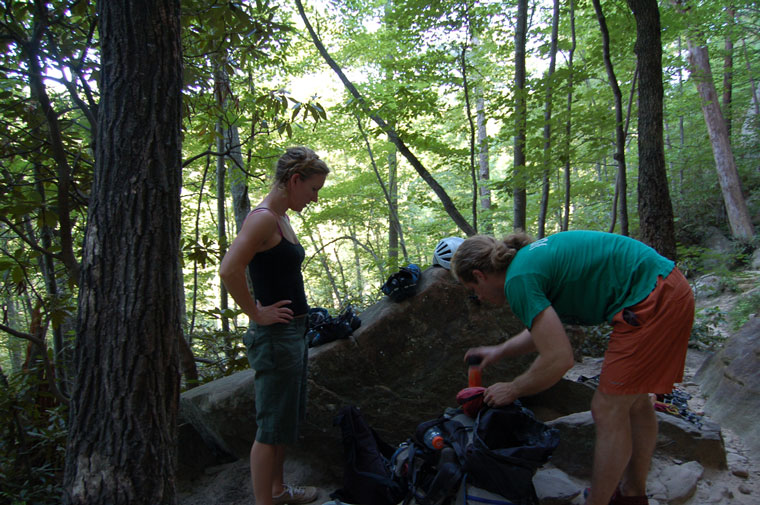
Gear:
1. Find a good outfitter for your first climb, with a guide certified by a member of the International Federation of Mountain Guides Associations, and preferably a certified Wilderness First Responder. Rent all of your equipment for the first time before investing in any of your own.
2. Wear comfortable, non-baggy clothes that you can easily move in.
3. Bring lots of water, sunscreen, insect repellent and snacks (trail mix, bars) on your climb.
4. Eat a big breakfast to provide energy for a day of extreme exertion.
5. When climbing, focus on using your legs. You’ll run of of steam early on if you’re constantly pulling yourself up. Your legs are much stronger than your upper body; take advantage and drive up!
